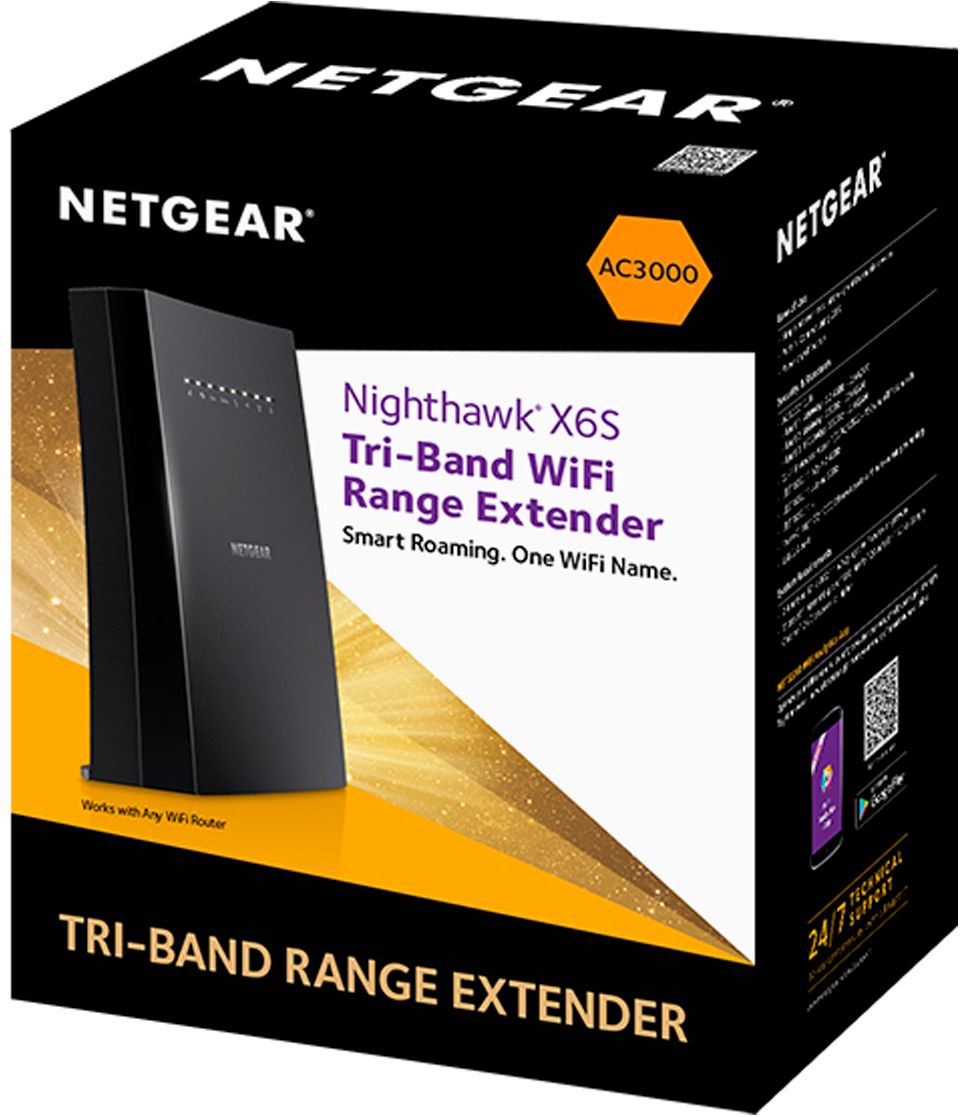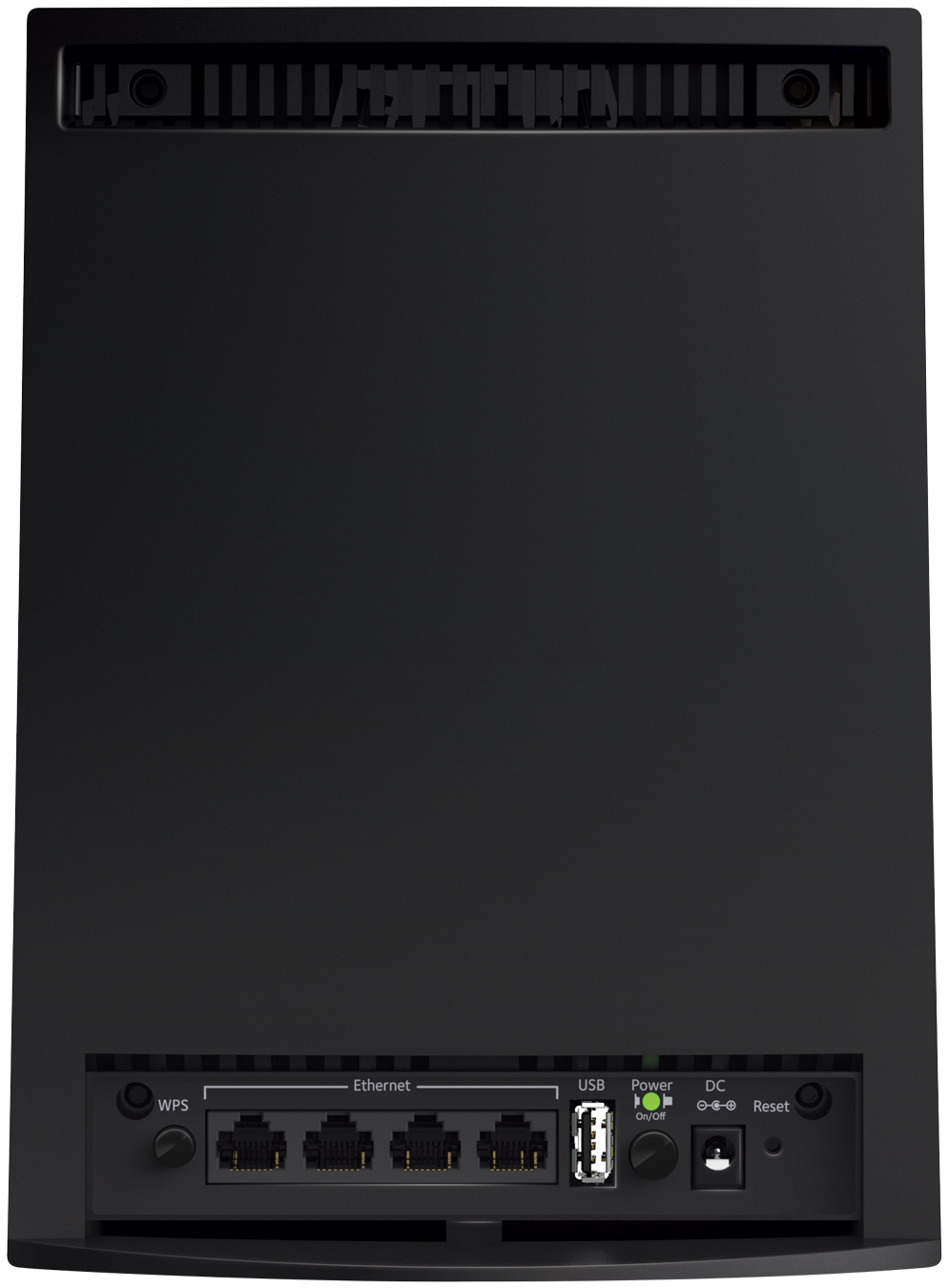TL;DR
The Netgear EX8000 X6S extender boasts impressive hardware, including a tri-band design and four Gigabit Ethernet ports, offering excellent Wi-Fi speed extension with minimal performance loss. However, initial software issues, particularly with DFS channels and DHCP stability, impacted its reliability, requiring workarounds or sacrificing peak performance. While Netgear has since released updates addressing connection problems, the review highlights the ongoing need for robust software alongside powerful hardware, especially for a premium-priced device. Despite its premium price and past software quirks, it's a compelling option for those needing extended, high-speed Wi-Fi with mesh capabilities. Read on for the full deep-dive!
2019-06-01 Update: The EX8000 has received a firmware update that addresses the connection issues described below and now operates reliably.
Poor Wi-Fi coverage and performance are common complaints among broadband customers. Discrepancies between advertised and actual speeds (e.g., 250 Mbps) often stem from various factors. Direct testing of all wired connections from the source is crucial, as Wi-Fi technology inherently involves compromises and limitations. Some factors, such as building materials, are beyond user control, while others depend on a combination of hardware and software within network products. Netgear is known for delivering high performance and robust hardware – reflected in their pricing. We previously reviewed their smaller mesh Wi-Fi extender, the Netgear EX7500 X4S. Now, we examine its larger counterpart, the Netgear Nighthawk AC3000 X6S EX8000 Tri-band Extender (referred to as EX8000 hereafter, noting that Netgear also markets a router under the Nighthawk X6S name).
Impressive Hardware
The EX8000 is a substantial piece of hardware, visually reminiscent of a scaled-down monolith from Stanley Kubrick’s 2001. While not unattractive, it lacks the understated elegance of, for example, Netgear’s ORBI. Its six integrated antennas contribute to a less flexible design, as they cannot be adjusted for directional signal optimization. Similar to the X4S, it employs a tri-band configuration, dedicating a 5 GHz channel (backhaul) for communication with the primary router, while the remaining 2.4 GHz and 5 GHz bands are used for connecting client devices. Unlike the X4S, the EX8000 features four Gigabit Ethernet ports, a valuable addition for applications like online gaming or high-resolution streaming where a stable wired connection is preferred for consoles and other devices.
The EX8000 offers two setup methods: a simple WPS button press – which proved successful in our initial test with the router in close proximity – or manual configuration via the integrated web interface. We evaluated the EX8000 in conjunction with our reference router, the Netgear Nighthawk X10 R9000, also from Netgear. The WPS setup largely functioned as expected. We opted to maintain separate Wi-Fi networks, appending “-EXT” to the EX8000’s extended network name to facilitate accurate performance measurements. For users seeking a seamless extension of their existing Wi-Fi network, the One Wifi merging feature is a viable option.
In terms of performance, the EX8000 excels. As expected, each hop in a Wi-Fi chain introduces some speed degradation. The EX8000 exhibited a loss ranging from 10% to 30%, placing it among the best-performing extenders we’ve tested. This performance is attributable to a combination of capable hardware and the dedicated backhaul channel, which avoids contention on the 5 GHz band between the router and connected devices.
The EX8000 extended the Wi-Fi signal by approximately 50 meters before a noticeable decline in coverage and performance occurred. While this extension is considerable, actual results will vary depending on environmental factors, building construction, and the presence of other wireless devices. Internally, the EX8000 incorporates a quad-core processor, six amplified internal antennas, and beamforming Wi-Fi with support for MU-MIMO (for simultaneous, optimized performance with multiple wireless devices).
Software Considerations
While the hardware is impressive, the software implementation presents some challenges. Netgear has historically demonstrated strong hardware capabilities, but recent software offerings have occasionally fallen short (a characteristic shared with Sony, which also produces excellent hardware but sometimes struggles with software). A significant issue with the EX8000’s software (potentially in combination with the R9000 router) is the requirement for the router to operate on channels above 100 to achieve its maximum theoretical performance. While operation on standard 5 GHz channels (44 or 48) is possible, the maximum transmission rate is then limited to 867 Mbps instead of 1733 Mbps. Channels above 100 necessitate DFS (Dynamic Frequency Selection), a safety mechanism that ensures Wi-Fi signals do not interfere with critical radar systems. DFS, however, appeared to introduce instability in communication between the EX8000 and the X10 router. Intermittent DHCP (dynamic IP) issues were also observed – a recurring problem with Netgear devices combining wireless and wired connections, although recent firmware updates have improved this. The extender is intended to acquire IP address 192.168.1.250 but occasionally receives a random final digit, complicating access to its web interface. (The correct IP can always be found in the router’s connected devices list, but this is still inconvenient.) More significantly, these IP address changes can disrupt connectivity, particularly for wired devices connected to the EX8000. Restarting the extender temporarily resolves the issue but often requires a reboot of connected devices as well. Configuring the router to channel 44/48 and assigning a static IP to the extender improves stability but sacrifices performance and necessitates manual configuration of settings that should ideally be automated. Discussions with colleagues suggest a communication bug related to DFS within the X10, EX8000, or a combination thereof, potentially interacting with the backhaul channel in the tri-band configuration (using channels above 100 is less common and should function seamlessly). We anticipate that future Netgear software updates will address these issues (especially as they occur between two of their own products). However, these problems detract from the experience of a device marketed as cutting-edge and high-end. (Two separate EX8000 units were tested during the spring and summer to eliminate the possibility of a hardware defect.)
With a current price of approximately 2000 SEK, the EX8000 is among the more expensive mesh extenders available. For users requiring extended Wi-Fi coverage and seamless roaming (mesh functionality), this solution is compelling. Alternatively, repurposing an existing router as a bridge or access point can provide similar functionality, albeit without mesh capabilities or potentially the same peak performance. However, focusing solely on theoretical transfer speeds can be misleading, as real-world services rarely saturate available bandwidth. Online services like Xbox Live and PSN typically operate in the 150-300 Mbps range, limited by server-side constraints. In such scenarios, a reliable router like our Asus RT66U, while lacking mesh, can provide two EXT networks and consistently perform well with wired devices (and has demonstrated excellent DHCP reliability).
Summary: The Netgear Nighthawk X6X EX8000 Tri-band Extender is a capable piece of hardware for extending Wi-Fi coverage and maximizing the potential of high-bandwidth fiber connections (500 Mbps or higher). We expect that forthcoming software updates from Netgear will improve its functionality. However, the software issues detract from the overall experience, raising concerns about quality assurance and firmware development for a premium product. (During our testing, the EX8000 ran firmware version 1.0.1.164, and the R9000 X10 ran 1.0.4.2.) The EX8000’s primary selling point is its superior speed compared to competitors – which it delivers – but stability and reliability are equally crucial, and these were lacking in its highest-performance mode during our testing period. The fundamental purpose of extending a network is to ensure reliable connectivity. In our assessment, real-world stability outweighs theoretical peak performance.
Therefore, despite the identified shortcomings, we offer a qualified recommendation, anticipating improvements in the EX8000’s performance with future updates. The relatively high price and minor DHCP-related issues are drawbacks, but for users with a compatible router who prioritize performance and require mesh functionality, the EX8000 presents a compelling solution.
Finally, we reiterate a request to Netgear’s software developers: when will the Wifi Analytics App be available on platforms other than Android?


